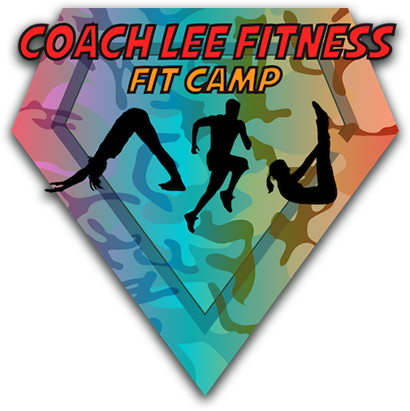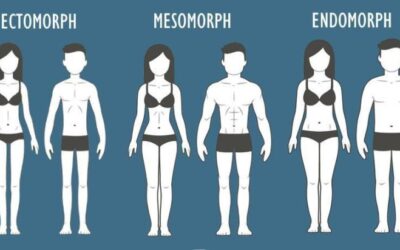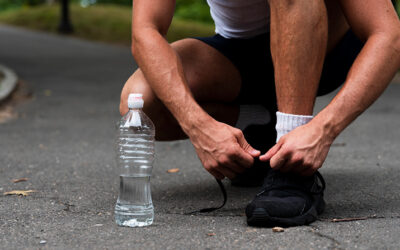Are you wearing the right shoes?
If there is anything that’s worth bringing to your attention in fitness, it’s this:
Always, always, make sure you are wearing the right shoes when training.
This isn’t just for running or for serious athletes. Wearing the right shoes is important for every type of sport and every level of training and ability. The whole “one shoe fits all” mentality can be severely damaging.
Most people think just showing up is good enough.
It is important to know that wearing the wrong shoes can cause you pain and injuries.
There are so many ways in which people make mistakes with shoes and fitness:
Keeping the same shoes for several years
Wearing the wrong size
Or just wearing the wrong type of shoe
Let’s debunk some of the common untruths your clients may have about working out and shoes:
Myth: Wearing the Same Shoe for Everything is A-OK.
For many new clients, this is a common misconception. They have their go-to pair of shoes sitting in their closet and they change into them to go to the store, walk the dog, lifts weights, play tennis, or even go on a weekend hike.
This is not a good idea. It is important to wear the right shoes for the activity you are involved in. If you are doing heavy lifting, you don’t wear your running shoes. And if you are playing a court sport, you don’t wear your walking shoes.
Different types of shoes are made for different reasons. Here are a few specific examples of how athletic shoes differ. Share these with your family and friends to give them an idea of what various shoes are designed to do:
Running shoes are made to provide cushion and help with lateral movements. Wearing a pair of running shoes to the tennis court to play tennis will wear them out faster and will fail to provide the grip or support you need.
Lifting in running shoes doesn’t keep you close enough to the ground and can cause you to get out of alignment because you don’t have the feel of the ground beneath you. Lifting shoes have a lifted and firmer heel to help generate force.
Think you can play a quick pickup game at the park with your old walking shoes? Think again. Basketball shoes support multi-directional movements and even offer extra support at the ankles to prevent rolling.
Even in the same category of shoes, you may need to get even more specific. For example, if you are a runner and you plan to run trails more often than any other surface you will need trail-specific shoes.
The only exception to this rule is a cross trainer. A cross trainer is made to be versatile. You can do light running and some light lifting. They also make a good all-around gym shoe, for those days when you go in and do some machines and then end up hopping on the elliptical for a few minutes.
Myth: Minimalist Shoes Are Best.
Before you think I’m about to say that minimalist shoes are always bad, know this: Some people do well with minimal shoes and for some activities, minimalist shoes can be great.
But, the majority of people who try these kinds of shoes don’t do it right. They don’t follow the proper transition into wearing minimal shoes, and that can lead to injuries.
Minimalist shoes are appealing for a couple of reasons: They’re lightweight and breathable and feel almost like you aren’t wearing a shoe. But if you have gone from wearing a high cushioned and supportive running shoe for years and then suddenly jump into a minimal shoe, you can injure yourself.
Carrying extra weight can also be an issue. For heavier people, they may need a more supportive shoe, no matter what kinds of wonderful things they heard about minimal shoes.
Myth: I Can Wear the Same Gym Shoes for Years.
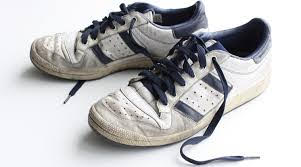
False, this statement really shouldn’t be a shocker, but for some it is. The running shoes you bought three years ago need to be replaced.
This is especially true with running shoes because cushioning is so important for protecting joints. No matter how they look or fit, if you have been wearing the same running shoes for years, it’s time to change. Depending on the mileage and the amount of activity done in a pair of shoes, they may not even last for half a year.
Myth: I’m Not a Serious Athlete, So I Can Buy Shoes That Look Cool.
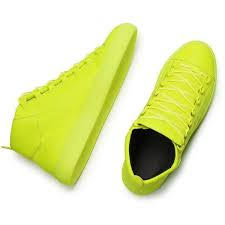
“Yes, those fluorescent yellow Reebok do look cool, but they might not be right for you.
The same goes for those cheap $20 shoes found at the bargain store. Prices are not reasons to choose athletic shoes. It hurts to hear sometimes, but the more expensive the shoes are, the better materials and quality and the longer they will last compared to cheap shoes.
Myth: The Tighter The Shoe The Better The Support.
Wearing the wrong size shoes can cause a medley of problems. From bruised toenails to uncomfortable blisters—if you have ever had a really bad blister you know how bad this one can be.
Ideally, there should be about a thumb’s width between the tip of your longest toe and the end of the shoes. This ensures that you have enough space to accommodate foot swelling.
Another good sizing tip is to pick out your shoes at the end of the day so that your feet will have expanded. When you run or stay on your feet for an extended amount of time, your feet swell and get bigger. So if your shoes are too tight, to begin with, you will run into some problems when you really get moving.
Myth: Any Shoe is Fine for Running.
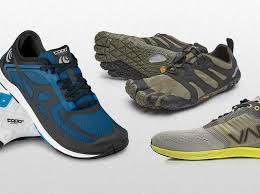
Running shoes typically come in three different categories: stability, neutral, and motion control (high stability). Each one is best for a different type of foot strike and gait.
High stability/motion control shoes. If you have a low arch or even a flat foot and you are very flexible, you need a motion control shoe. These shoes have extra support and stability on the medial and lateral sides to help stop excessive movement while running.
Stability running shoes. Some people have flexibility and a moderate arch. These people may over-pronate a little and need more medial support to help prop up the arches and prevent you from over-pronating.
Neutral shoes. If you have a high/normal arch and don’t over-pronate, then you can wear a neutral shoe. A neutral shoe has support on the outside of the shoe because a person who has high arches can tend to roll their feet outward slightly or supinate. A Neutral shoe has support for normal pronation, so if you over-pronate you will need a stability shoe.
Wearing the wrong shoe for your gait can lead to injuries, so it’s worth doing a few tests to figure out which shoes are best for you. Running store employees can help fit you, or you can try this trick at home:
Use a piece of paper or even the sidewalk. Wet your feet and step on a piece of paper or the sidewalk until you have a good outline of your foot. This will show you what kind of arches you have.
If you see a large gap between your toes and heel, you have a high arch and you should try a neutral shoe. You don’t need the extra medial posting that stability shoes use.
If you see some of your foot between the heel and ball, you have medium arches and a stability shoe is best for your gait.
If your foot just looks like a flat blob, you have low arches or a flat foot and you may need more support; a motion control shoe is probably right for you.
Myth: These Shoes Just Need to Be Broken In.
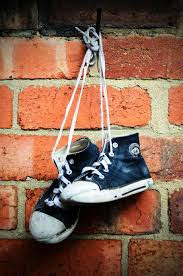
Your client tells you his new shoes aren’t comfortable yet, but they look cool and were on sale and he’ll just break them in.
Wrong. You shouldn’t need to break in your shoes all that much to make them feel comfortable. New athletic shoes should feel like you can wear them right out of the box. Yes, you should wear them a few times before you commit to a longer run or walk, but if they rub or feel too tight in certain spots when you try them on, don’t count on your new shoes feeling better after putting a few miles on them.
Avoiding these common shoe mistakes can benefit you in the future. You may even avoid some of the serious injuries that can sidetrack progress. When in doubt, consult with a Podiatrist.
MORE ARTICLES
The Three Body Types, Explained
Learn your somatotypes to better understand your potential…
The Importance of Fluid Balance and Hydration
Water performs several important functions in the body…
